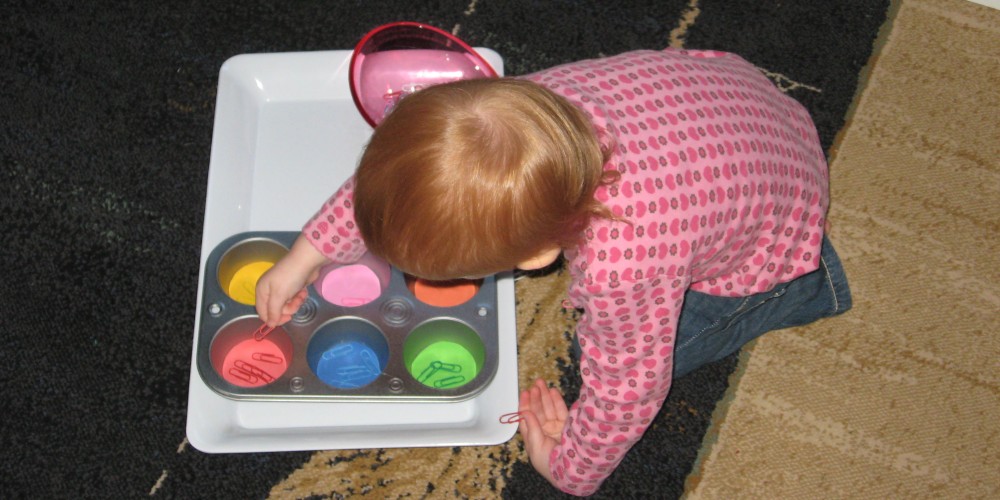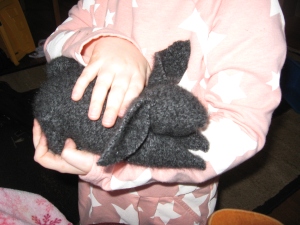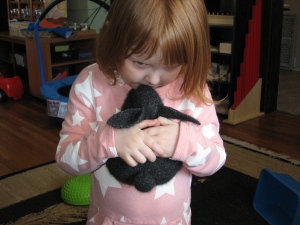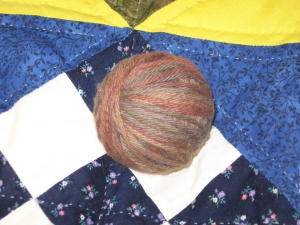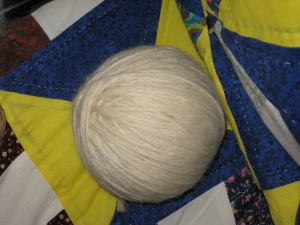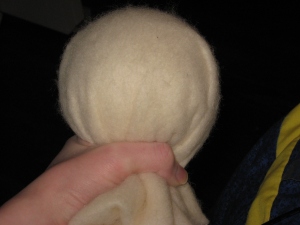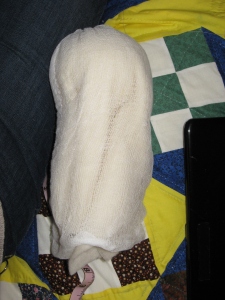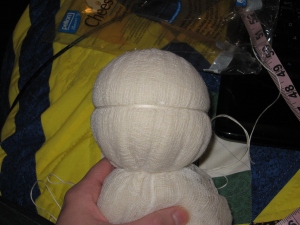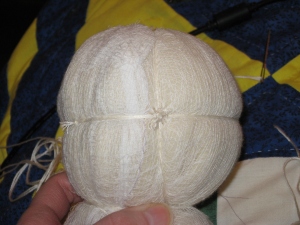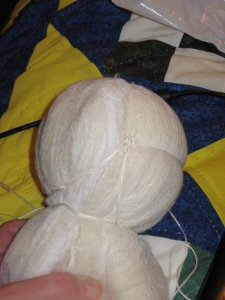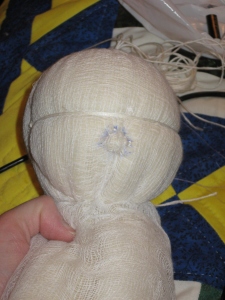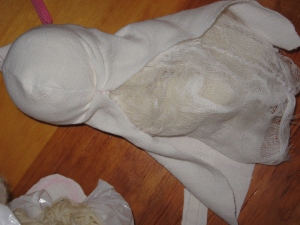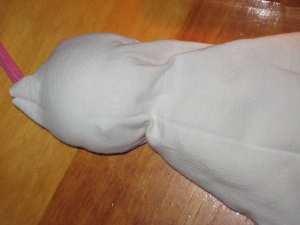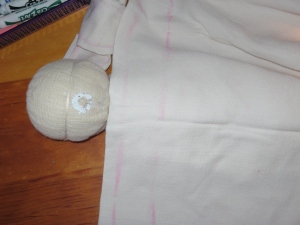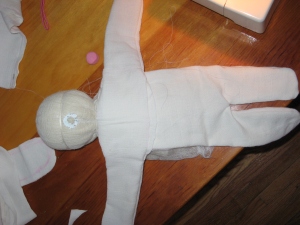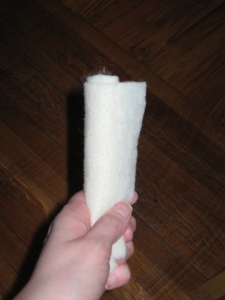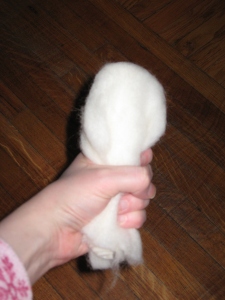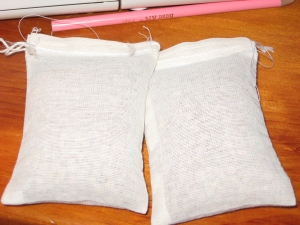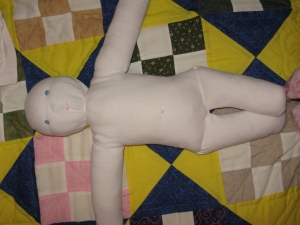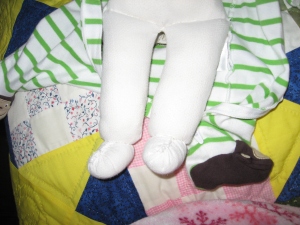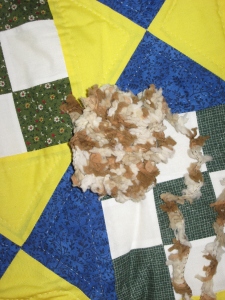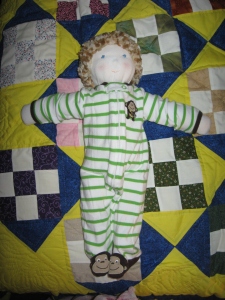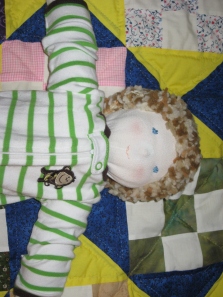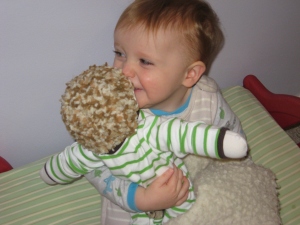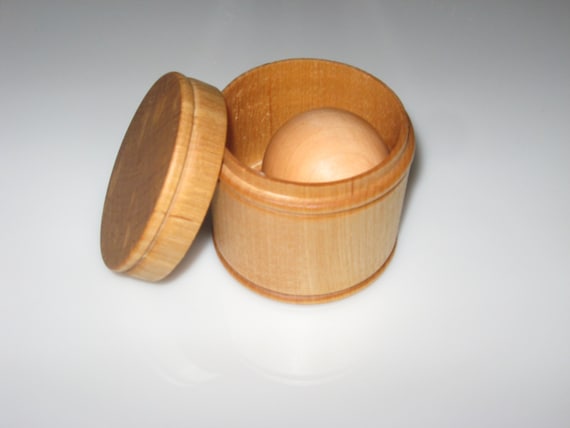
So, this is probably going to be a controversial post. I know when I would read things about no TV I’d get defensive. “It’s too hard to have no media”, “sometimes I just need a break”, “it’s a great educational tool”, “it’s the only way I can get some work done” were all things I’d think. But I’ve come around in my thoughts and seeing the effects of no media on my children has affirmed that this is the right decision for us. What you decide for your family is totally up to you. One answer doesn’t fit all. This isn’t a post to tell you what to do. It’s a post to tell you why I’ve changed my mind.
So, recently we’ve made the decision to stop all exposure to television and media for our children until they’re older (no set age yet). The overwhelming evidence shows that media exposure (television, computers, ipads, ipods, smartphones) is harmful on the developing child. The American Academy of Pediatrics recommends “children under the age of two watch no screen entertainment at all because television ‘can negatively affect early brain development‘”
Research published in the world’s most reputable medical and scientific journals shows that the sheer amount of time children spend watching TV, DVDs, computers and the internet is linked with significant measurable biological changes in their bodies and brains that may have significant medical consequences.
How much TV are kids today watching?

By 7 years of age the average child will have watched screen media for over a year of 24 hour days! The average European young person by the age of 18 will have spent 4 years of 24 hour days in front of a screen. By the age of 80 these children will have spent over 13 years of 24 hour days just watching TV.
40% of infants are regularly watching television by 3 months of age and by the age of 2 years 90% are.
Children in Britain between 11–15 years spend 55% of their waking day watching screen media, that’s 53 hours a week, seven and a half hours a day.
How does media and screens negatively affect children?
Studies have demonstrated a deleterious effect of watching more than one to two hours of television per day on academic performance [31]. Excess television viewing causes poor peer relationships and thereby increases the risk of social isolation, anxiety disorder and agoraphobia [32]. Studies have shown that TV viewing may play an exacerbating, if not causal, role in the development of attention-deficit/hyperactivity disorder [33] and that excessive TV viewing in adolescence is a risk factor for development of depression in young adulthood. [34]. http://files.eric.ed.gov/fulltext/EJ989518.pdf
Good evidence suggests that screen viewing before age 2 has lasting negative effects on children’s language development, reading skills, and short-term memory. It also contributes to problems with sleep and attention. If “you are what you eat,” then the brain is what it experiences, and video entertainment is like mental junk food for babies and toddlers.
Just having the TV on in the background, even if “no one is watching it,” is enough to delay language development. Normally a parent speaks about 940 words per hour when a toddler is around. With the television on, that number falls by 770! http://www.healthychildren.org/English/family-life/Media/Pages/Why-to-Avoid-TV-Before-Age-2.aspx
Let’s break that information down:
The effect of media on socialization:
Using media reduces the amount of time a child spends interacting face to face with others.
Over the last twenty years social interaction (eye-to-eye contact) has gone down while eye-to-screen-contact has gone up. Just before the year 2000 life became literally virtual: people would spend more time in front of a screen than spending time interacting with other human beings
For every hour spent in front of a screen, there is a reduction in face-to-face time with the family by 24 mins. A study by the University of California–Los Angeles has found that “social disengagement is now rapidly increasing, as side-by-side and eye-to-eye human interactions are being displaced by the eye-to-screen relationship.

A study of brain function in adults found that when using the internet, the areas of the brain associated with empathy showed virtually no increase in stimulation. In particular, there seems to be a decline in the subtle skills of reading the nuances of other’s emotions. The biggest drop in empathy has been found to be after the year 2000. College kids today are about 40 per cent lower in empathy than their counterparts of twenty or thirty years ago.
The University of Michigan study concluded that the rise of social media may also play a role in the drop in empathy, ‘The ease of having “friends” online might make people more likely to just tune out when they don’t feel like responding to others’ problems, a behavior that could carry over offline.’ Electronic media has also contributed to a social environment that works against slowing down and listening to someone who needs a bit of sympathy.
Television affects language development:
Despite claims that educational DVDs and videos are beneficial to young children, a study published in the medical journal Pediatrics found that the use of such productions might actually have a negative effect on language development. Even ‘educational’ television programmes, DVDs and videos have shown no positive effects on children age 2 and under whether they were educational or non-education media. Even if parents sat and watched the show with the children it made no difference to the outcome. Researchers have found that for every hour spent watching specially developed baby DVDs and videos such as ‘Baby Einstein’ and ‘Brainy Baby’, children under 16 months understood an average of six to eight less words compared to children who did not watch them.

Media has a major effect on the brain:
…the World Federation of Neurology as “[computer games are] halting the process of frontal lobe development and affecting children’s ability to control antisocial elements of their behaviour … alarmingly, computer games stunted the developing mind”.
Even just a few minutes of television viewing has a negative impact on the intellectual functions carried out by the by the frontal lobes of the brain in 4 year old children. “‘Just 9 minutes of viewing a fast-paced television cartoon had immediate negative effects on 4-year-olds’ executive function” and “A new study is even more specific, reporting ‘widespread reductions’ in the condition and size of brain cells in ‘major white matter pathways… throughout the brain, including the orbito-frontal white matter, corpus callosum, cingulum, inferior fronto-occipital fasciculus, and corona radiation, internal and external capsules”
Media exposure causes sleep disturbances:

A study of 2068 children found that television viewing among infants and toddlers was associated with irregular sleep patterns. The number of hours of television watched per day was independently associated with both irregular naptime schedule and irregular bedtime schedules. (Thompson and Christakis 2005) Another study of 5-6 year olds found that both active TV viewing and background ‘passive’ TV exposure was related to shorter sleep duration, sleeping disorders, and overall sleep disturbances. Moreover, passive exposure to TV of more than two hours per day was strongly related to sleep disturbances
Researchers have reported that when children aged 6-12 were deprived of their media, their melatonin production increased by an average 30%. Melatonin is a sleep-promoting hormone produced in the brain. “Exposure to a screen media was associated with lower urinary melatonin levels, particularly affecting younger children at a stage of pubertal development when important changes in melatonin’s role take place.” Does your child have trouble sleeping? Try cutting out their media exposure, especially before bedtime.
Media exposure affects a child’s attention span:
Early television exposure is associated with attentional problems at age 7. Children who watched television at ages 1 and 3 have a significantly increased risk of developing attentional problems by the time they are 7. For every hour of television a child watched per day, there was a 9 per cent increase in attentional problems.
The study concluded: ‘Childhood television viewing was associated with attention problems in adolescence, independent of early attention problems and other confounders. These results support the hypothesis that childhood television viewing may contribute to the development of attention problems and suggest that the effects may be long-lasting.’
Media exposure affects academic performance:

Television viewing amongst children under 3 is found to have ‘deleterious effects’ on mathematics ability, reading recognition and comprehension in later childhood. Along with television viewing displacing educational and play activities, this harm may be due to the visual and auditory output from the television actually affecting the child’s rapidly developing brain (Zimmerman and Christakis, 2005). A 26-year longitudinal study, tracking children from birth, has concluded that ‘television viewing in childhood and adolescence is associated with poor educational achievement by 26 years of age.
For every additional hour of television at 29 months there is a correspondence years later to a 7% and 6% unit decreases in classroom engagement and math achievement. “Higher levels of early childhood television exposure predicted less task-oriented, persistent, and autonomous learning behavior in the classroom.”
Media is associated with less reading:

We have heard over and over how important reading is to a child’s development, however “Pre-school children spend three times longer in front of a television or computer than they spend reading”. Researchers have found a link between the use of computer games and lower attainment in reading and literacy.
a European based study of 15-year-old students in 31 countries concluded that those using computers at school several times a week performed ‘sizeably and statistically significantly worse’ in both maths and reading than those who used them less often
The effect of media on physical health:
a study published in The Lancet, conducted at the Dunedin School of Medicine, University of Otago, New Zealand, tracked the television viewing habits and health of 1,000 children over 26 years. It found that children who watched more than two hours of television a day between the ages of five and 15 developed significant health risks many years later
Each extra hour of watching TV is associated with an extra 1 kg of body fat. Harvard researchers reported that “beyond merely displacing physical activity, TV appears to slow metabolism and burns fewer calories compared with other sedentary activities such as sewing, reading, writing or driving a car”. Watching television actually makes us eat more. “A recent US study found that even children who watched a below average amount of television (less than three hours a day for an average of 2.7 days a week) ate roughly the equivalent of an extra meal a day more than those who watched none”. Watching television candisrupt the natural link between appetite and eating.
Media also increases our risk of cardiovascular disease:
Children watching 2 to 4 hours of TV a day had 2.5 times the likelihood of having high blood pressure compared with children watching 0 to less than 2 hours. While those children watching 4 or more hours of TV were 3.3 times more likely to have high blood pressure
Media can also affect the hormonal development:
The lead author speculated that girls are reaching puberty much earlier than in the 1950s. One reason is due to their average increase in weight; but another may be due to reduced levels of melatonin. Animal studies have shown that low melatonin levels have an important role in promoting an early onset of puberty
But can’t media be educational?
Infants may stare at the bright colors and motion on a screen, but their brains are incapable of making sense or meaning out of all those bizarre pictures. It takes 2 full years for a baby’s brain to develop to the point where the symbols on a screen come to represent their equivalents in the real world.

The American Academy of Pediatrics has issued a report stating: ‘children learn more from live presentations than from televised ones. … Young children learn best from—and need—interaction with humans, not screens. … Unstructured play time is more valuable for the developing brain than electronic media.’
‘When learning from videos is assessed in comparison to equivalent live presentations, there is usually substantially less learning from videos’ (Anderson and Pempek, 2005). A phenomenon called the ‘video deficit’ is being used to describe the observation that toddlers who have no trouble understanding a task demonstrated in real life often stumble when the same task is shown onscreen
Studies have found that “‘the introduction of home computer technology is associated with statistically significant and persistent negative impacts on student math and reading test scores”
Malamud and Pop-Eleches (2010) compared the educational effects of government provided home computers on Romanian school children, and concluded that children given these home computers ‘had significantly lower school grades in Math, English and Romanian but significantly higher scores in a test of computer skills’.
Researcher have concluded, after examining certaim measure of cognitive development, that, “An 11-year-old today is performing at the level an 8- or 9-year-old was performing … 30 years ago … “. The decline was attributed in part to the growing use of computer games.
Also a child cannot learn a new language from watching TV. Language learning requires interaction. Studies have found giving babies just 12 sessions in front of a Mandarin-speaking instructor dramatically increased their ability to differentiate Chinese sounds. However, this effect is not there if the exposure to the language is by TV or radio, instead of a human. Going back to the earlier studies I mentioned, TV watching is actually associated with poorer language skills. being. http://blogs.vancouversun.com/2011/03/01/why-your-kid-cant-learn-foreign-languages-from-watching-tv/
Don’t children need to be exposed to media so that they are able to function in a technological world and know how to use it when older, especially in today’s workforce?
Research has actually found that even monkeys are comfortable with, and capable of using, the same screen technology that children are exposed to. Technology today is rapidly changing. The media children are using right now will not be the media and technology they will be using as adults. Researchers at Harvard Medical School have stated, “There is no data to substantiate the claim that young children need to learn to become comfortable with screen technology.”

But the TV is just on, no one is watching it, it’s just background noise.
In case you thought you could turn off Barney for your baby but keep the Bachelorette re-run buzzing in the background, think again. For the first time, the AAP statement weighs in on “secondhand TV,” the group’s version of secondhand smoke. Up to 60% of families report that the television is always or often on, even when no one is watching. “When you think no one is really watching, someone is watching, and it’s your child,” says Brown, citing research that shows young children playing with toys while an adult show is on will look up at the screen every 20 seconds.
My personal observations:
I used to try to just limit tv and media. But I was finding it easy to just put it on when my children were being difficult, which children often are. And just a few minutes would quickly become an hour or two while I got engrossed in my work. Not to mention the tantrum that resulted when it was turned off. I also could see how much of an influence it would have on Pumpkin 1. She’s start talking like how she heard the characters in the show talk. She started calling me “Mom” like Franklin calls his mother even though before I was always Mommy. These were innocent things as she mostly only watched Franklin, but they were having such a profound effect on her that I can only imagine how darker or more serious shows would affect her.
I decided that it was better to go all out no tv then to do limited. At first it was hard. She was cranky and bored and driving me nuts. It seemed to take 2 or 3 days to get it out of her system and then she changed. She started playing independently with her toys for hours. Her imaginative play increased. Her tantrums reduced. She was happier and more engaged. I was able to get work done without having to entertain her or turn on the TV because she was able to play on her own. When I let her watch a movie one Sunday, the effect was so noticeable. The next day from when she woke up she was miserable, cranky, throwing tantrums about everything. I was actually shocked by the change in her. After a day of no media she was back to herself.
Pumpkin 2 has seen very little tv. He will sit for forever and let you read stories to him. I’ve seen a real difference between my children and my daycare children. They can hardly sit still through a story whereas my children sit as quiet as mice, completely enthralled in the book.
So are we going to freak out if our kids see a little TV for a relative lets them play on their electronic device? No, it’s not banned outright. It don’t think it’s good to be obsessive about anything. But in our home, we’re working hard to make it media free for our children while they’re young. We’ll revisit our decision as they get older.


